TRANSFORMING HIGH SCHOOL VIA YOUR SCHOOL BOARD
It starts in
your own
backyard
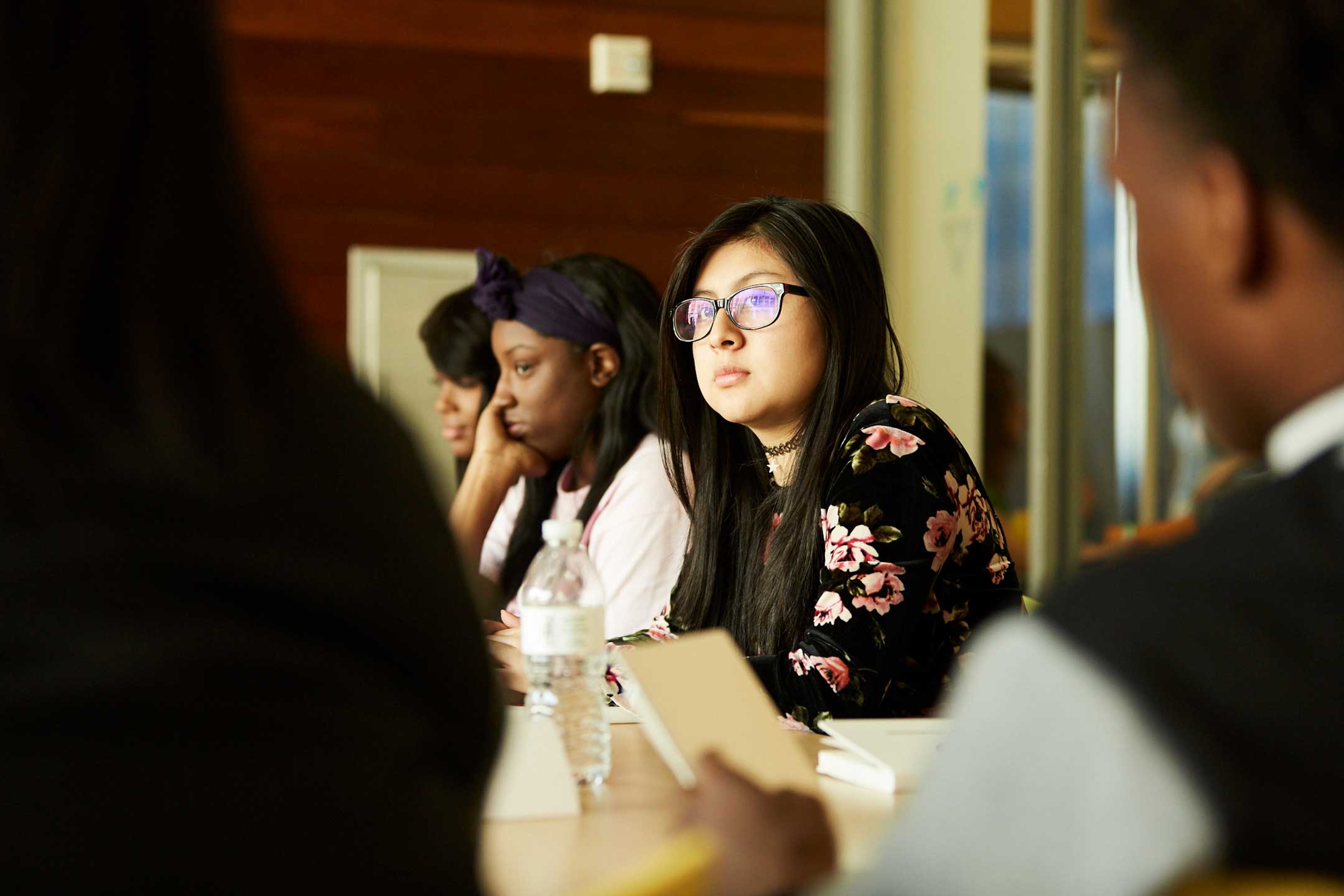
BE A STANDARD-BEARER FOR PROGRESS
In the movement to rethink American high schools, no one is more important than a committed local school board member.
Whether you’re new to the board, a seasoned veteran, or somewhere in between, serving for change requires a deep conviction that local high schools need to change and a belief that changing them is possible. It requires humility—a willingness to admit that you don’t know all the answers—coupled with a willingness to inspire and assist others to get involved, fashioning the answers together. It requires tenacity, especially when protectors of the status quo push back. You’ll need to listen intently, study carefully, think creatively, and then act accordingly on behalf of high school students in your community.
You know the issues. You know your district. You know the stakes.
What’s left?
To press forward. To be the standard-bearer for change.
School transformation starts in your own backyard and ripples forward to touch every corner of your community. And this is just the beginning. All around the country, people like you are taking up the mission and mantle of being the change they want to see in the arena that affects us all the most: Education.
Rural communities. Urban communities. Suburban communities. Alone, these local transformations are a source of pride, a show of progress. But taken together? It’s a real-time, true-to-life movement in the making.
Being part of a genuine, growing movement means many things, but most of all, it means that you’re never alone. That you’re part of something bigger than yourself. That what you do today will shape tomorrow—and affect those who come after you. As you’re leading the education redesign in your community, others are doing the same in theirs.
XQ AND YOU: CALLING ALL SCHOOL BOARD MEMBERS
If you’re a school board member who’s already working to transform your high schools or interested in getting started, please get in touch! We’d love to hear from you.
Write to us at [email protected]
Check out our XQ school design resources, including in-depth Knowledge Modules, inspiring videos, and infographics. All are free and open source.
Visit us at XQ Schools Resources.
Earning Consensus
For Change, Every Day
STAND TOGETHER TO MOBILIZE THE SCHOOL BOARD
One of the most powerful things a school board can do is shine a spotlight on the need for change. You and your fellow board members can start by making a public commitment to take a close, thorough, and fair-minded look at your local high schools. It’s time to join hands with your colleagues on the board, your superintendent, and others in the community to consider—together—what changes might be necessary.
If we can share one piece of advice as you set out, whether as a school board member or an active community member, it’s this: Commit to rethinking your public high schools in a very public way.
Whether you get the whole board involved or get the board to form a committee, whether the board starts alone or by inviting the community in from the beginning, make sure the process is crystal clear, including the steps you’ll take to be sure everyone who’s interested can get involved. Get the superintendent on board, as his or her cooperation will be important to making the process go smoothly. And always, always share the information you’re relying on and where it came from. The more proactively transparent you and your colleagues are, the more trust you gain.
And remember, even if you start with a thorough review of the current situation, the listening and learning process is never finished. As a board, it’s important to find ways to keep looking throughout the year and from one year to the next. Public engagement strategies like community conversations focus groups, and even polling can help surface issues and find common ground, especially around contentious issues. A commitment to ongoing listening and learning helps ensure that your priorities are the community’s priorities and that community ideas become school board solutions.
INFORMATION GATHERING - REACH OUT AND TAKE STOCK
To get underway, consider setting a timeline for stock-taking that includes active outreach—listening and reporting back—to the broader community. Here are some things to put on your agenda.
Explore the Data
Collect, examine, and share data on big issues like high school completion, college readiness, student proficiency, access to advanced courses, attendance, and discipline. Compare the numbers for all kids in the district, for particular groups of students, and for specific schools. Consider commissioning a systematic audit to get at underlying equity issues.
Build Alliances
Invite people from youth organizations, after-school and sports programs, arts and cultural groups, and local faith and civil rights coalitions to the table. Ask them about the young people they work with every day, and what high schools can do to better prepare them for the future.
Listen to Families
Hear from families about their experiences with local high schools—district schools, and also private, charter, and parochial schools if your community has them. Listen to parents who have chosen to homeschool their children. Ask all of them to share the challenges they have faced and their expectations for their children.
Explore the Data
Collect, examine, and share data on big issues like high school completion, college readiness, student proficiency, access to advanced courses, attendance, and discipline. Compare the numbers for all kids in the district, for particular groups of students, and for specific schools. Consider commissioning a systematic audit to get at underlying equity issues.
Reach Out to Teachers and Principals
Ask high school teachers and principals to share their ideas with you on how high schools could be improved. What do they think is working? What needs attention? Which rules and regulations are getting in the way of improvement?
Engage Students
Talk with a broad range of students—not just the ones taking advanced courses or the student government leaders who are typically invited to present to the board. Ask them about their aspirations and their experiences in high school. Ask them about relationships: Do they feel that adults in their schools know them well and care about them?
SUMMARIZE AND STRATEGIZE YOUR FINDINGS TOGETHER
If your stock-taking process doesn’t take place at regular board meetings, make sure to schedule regular reports of what you are learning during school board meetings. Leave plenty of time for comments, questions, ideas, and discussion. While you’re at it, why not invite some of those you spoke with to address the board? That way, you’re getting more people involved with school board proceedings. Remember, when people are engaged in identifying problems on the front end, they’re much more likely to help solve them later on.
Once the process is complete, stop to summarize and strategize together. Where do your local schools stand today? What did the process tell you about what needs to be done, not to mention the interest and capacity of various community institutions and organizations to play a role? The results might surprise you—and they will almost certainly surprise others. The simple fact is that there’s room for improvement in every high school in the country, even those that are considered best-in-class. Similarly, even struggling high schools hold inspiring lessons and ideas.
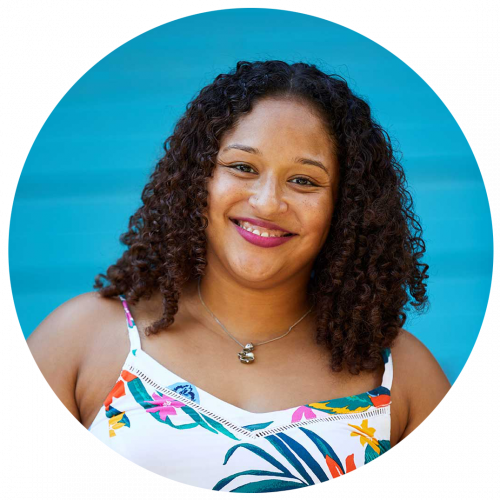
School Board Stories:
CIPRIANO VARGAS
Rich Township High School District 227, Illinois
“I was raised to be a servant leader and to serve wherever I thought I could make a difference. It’s exactly what motivated me to fill the need on my local school board.”
Alyssa Hernandez was just 18 years old and a full-time high school senior when she was elected to her local school board. In fact, her tenure began just a few short weeks before graduation. She was inspired to run because her community of Park Forest, Illinois, wasn’t fully represented on the local school board. “The Rich East community had long felt neglected and questioned the direction of the district, because of the lack of local representation. This was my call to action.” Alyssa thrives on giving back to students and truly understands the importance of strong high school education. That’s why she feels so proud to hand out diplomas to students she has mentored. “Graduation each year made the rest of the struggles worth it.” Another point of pride was the role she played in her school board’s nationwide search for a superintendent. “We hired an excellent superintendent from within our community. We found that the best candidate for the job was our assistant superintendent. She is a rockstar, and I was proud to help fulfill her vision.”
Forging The
Path That’s Right for Your Community
WHERE DO YOU BEGIN?
Tackling Inequities From the Start
Your stock-taking process might have revealed glaring problems for certain groups of students—for example, for those attending schools in particular neighborhoods or for low-income students and students of color more generally. Or you might have seen evidence of neglect—schools without sufficient books or computers, rundown facilities, or overcrowded classrooms. If that’s the case, you and your board colleagues may choose to start by addressing those inequities head-on with decisive action. Addressing these inequities is important in its own right. But, especially where there is more suspicion than trust, it may also be an important step in building the trust and relationships necessary to mount and sustain a broader, community-wide school redesign process.
Mounting a School
Redesign Effort
Your stock-taking process might have uncovered evidence that your high schools weren’t working very well in general. Perhaps school attendance is steady, but students complain about being bored in the classroom. Perhaps students are graduating, but too many aren’t confident about putting together a plan for college or future careers. Perhaps there’s just a certain staleness to the educational approach and a feeling that your schools need to be doing much more to engage, challenge, and uplift students and the community. If that’s the case, you and your board colleagues can begin immediately to rally your community around high school redesign.
EQUITY AND INNOVATION GO TOGETHER
The vast majority of today’s high schools—even the good ones—simply aren’t designed to provide a college- and career-ready education to every single student. Addressing equity problems means looking closely at how high schools are organized, what and how students learn, and what schools expect all their graduates to know and be able to do. It means asking hard questions about why some students aren’t getting the education they need, and what it’s going to take to change those patterns. Most communities that choose equity as a starting point will therefore also want to launch a high school redesign effort. Similarly, in a high-quality redesign process, innovation alone will not be enough: you’ll need to put equity at the center of everything you do.
Equity and innovation go hand in hand. What differs is the order in which you do things, the priority you give to certain schools or groups of students where inequities are stark, and the level of effort needed to build trust among students and families who have been poorly served by existing high schools.
EQUITY vs. EQUALITY
Too often, “equity” is confused with “equality,” which typically means every student getting equal resources, regardless of their circumstances. Equality is important, too, and glaring educational inequalities are often easy to spot. You may have seen inequalities in small vs. overcrowded classes, advanced vs. low-level coursework, modern vs. outdated facilities, or counselors and other helping professionals. You may have seen inequalities, too, in discipline data suggesting different punishments for certain groups of students for similar infractions.
ACHIEVING EQUITABLE RESULTS
For communities, achieving equitable results means high schools that meet every student where they are, as individuals, and make sure they get what they need to succeed in postsecondary education and adult life. Yes, all students need excellent instruction, engaging learning, encouragement, access to vital services and a full range of opportunities, and more. But some students need more of those things than others from their school community.
To catch up with their peers, for example, students who enter high school behind may need extra instruction in the form of longer school days or perhaps extra instruction on weekends or during the summer. Similarly, those who live in particularly challenging circumstances may need extra counseling or mental health supports. Sadly, though, instead of providing these extras, today’s high schools often provide the least to exactly the students who need the most.
LEADING
FOR EQUITY
1.
Make sure your goal for students is clear: all students on a path to college and careers. All young people need and deserve to graduate from high school ready for postsecondary education, even if they’re not immediately college bound. That’s the promise of public education. And it’s more important today than ever.
2.
Ground your efforts in evidence and data. Share the numbers and other information publicly, discuss them in school board meetings, and make sure all data are easily understood.
3.
Make sure schools get the help they need to build commitment and capacity. Reversing inequity requires profound changes in how high schools operate. To carry out this difficult work, educators will need help: leadership, training, and resources.
4.
Build trust among students and families. A history of inequity might mean some people don’t believe that change is possible, or that the school district really cares. Both the board and the schools need to work hard to overcome that by engaging openly and inviting community participation.
Don’t think for a minute that tackling inequities will be easy because, after all, it’s about fairness. It turns out that fairness is often in the eye of the beholder.
Almost every change you make will threaten somebody’s established interests: a teacher who might prefer to continue teaching just the “easy” kids; a powerful parent who thinks that keeping his daughter’s AP physics class small is a right; a low-wage employer who thinks higher standards for all will threaten her supply of willing workers.
But remember, for every one of these, there are usually many others who will cheer you on—though not always loudly. Teachers who got into teaching to help even the poorest children succeed. Parents who value diversity and don’t want their children to grow up in a world riddled with inequities. And employers whose biggest problems aren’t maintaining a supply of low-skilled labor but finding enough people who are highly skilled.
A committed school board can provide the leadership a community needs to navigate these and the many other challenges inherent in moving toward educational equity.
ASSEMBLE AN ADVISORY COMMITTEE
If you decide to start by tackling equity issues, the school board will probably need to craft and pass a resolution making its intent clear, then work with the superintendent on goals, timelines, and a process for getting there. Encourage high schools to get involved by assembling advisory committees composed of parents, students, youth-serving organizations, and other community institutions to help them identify root causes and fashion effective solutions. You may want to assemble such a group district-wide to help you monitor and assess progress.
You might choose to work on one piece of the problem at a time across all of your high schools. If, for example, your review found egregious differences in access to college prep and advanced courses, or in suspension and expulsion rates, you might set some goals there and ask all of your high schools to focus there first. Similarly, if you found an unusually high teacher (and possibly also leadership) turnover or high teacher absenteeism in some of your schools but not others, with the result that some students were taught mostly by novices, you might choose to tackle that problem immediately. Or the board could lay out the range of inequities you uncovered and ask your high schools to make their own choices about what order in which to tackle them.
EQUITY RESOURCES
To learn more about how high schools can serve all groups of students equitably, check out these organizations.
Low-Income Students and Students of Color
National Equity Project
The Education Trust
Diplomas Now
Internationals Network for Public Schools
English Learners
Center for Applied Linguistics
Center for English Language Learners at the American Institutes of Research
Migration Policy Institute
Internationals Network for Public Schools
Students with Disabilities
National Center for Educational Outcomes
Launching a Redesign Process
REPLACE OUTMODED EXPECTATIONS
We know that the future isn’t waiting for anything or anyone. We also know that in the rapid-paced, 21st-century economy, good is no longer good enough. If you and your school board colleagues don’t want to settle for high schools that were designed a century ago, you’ll want to launch some sort of a school redesign process to replace outmoded expectations of what high school should look like with a new set of ideas for what high school can be. You won’t be the first community to head in this direction.
MAKING OUR VOICES HEARD
Your vote matters in every election—national, state, and local—but when it comes to school board elections, it’s even more deeply personal. The future of our schools affects the future of our local economies, neighborhoods, environments, and more. Voting is a right, but it only counts if you exercise it.
The truth is that because school board elections don’t always align with national or midterm elections, they tend to be under-promoted and underrepresented at the polls. It’s more than a shame, it’s a disservice. These are our communities. It’s only right that we make our voices heard.
HIGH SCHOOLS TO LEARN FROM
Vista, CA
In Vista, California, Vista High School is transforming itself from a large, traditional high school into one where each student is engaged and empowered. Everything about this 2,700-student high school is being rethought to make learning more personal and more relevant. The school is organized into “houses,” each with a team of five teachers, so students can develop trusting relationships with faculty and one another. New courses help students better understand themselves and the world in which they live, and a special “challenge” course encourages students to explore, analyze, debate, and research ethical responses to global problems inspired by the UN Sustainable Development Goals. Vista is preparing its graduates to be 21st-century activists, conscious of their power to transform their own lives and the lives of others.
Cleveland, OH
In Cleveland, Ohio, a group of innovators from education, local industry, museums, and higher education came together to design a STEM-focused school in the heart of a community that was losing its population and had one of the highest dropout rates in the country. Ten years later, MC2 STEM High School and its two primary partners, Cleveland State University and General Electric are using the city as the campus with a curriculum based entirely on project-based learning. The school pulls in experts, internships, and resources from more than 85 local industry and advocacy groups to help prepare students to work in and for the community. Students pursue semester-long, interdisciplinary, theme-based projects that integrate Ohio’s state standards and reflect current industry needs. The atmosphere of innovation empowers students to direct their own learning.
Grand Rapids, MI
In Grand Rapids, Michigan, students at the new Grand Rapids Public Museum School treat the entire community as their classroom, with the museum and city archive as a home base. The high school’s philosophy stems from a simple idea: immerse students in learning experiences that are deeply rooted in their own hometown. The curriculum focuses on big issues related to sustainability, technology, and design explored through a local lens—the history, culture, economy, and ecology of the Grand Rapids region.
Elizabethton, TN
In Elizabethton, Tennessee, students are actively contributing to the redesign of their high school and the revitalization of their hometown. With support from their teachers and the local school board, students designed a new initiative, the Bartleby Program, through which students take on community improvement projects and develop their entrepreneurial skills. Recognizing the importance of student’s voice, the local school board added a student member who provides direct input on key decisions. The success of the Bartleby Program has spurred Elizabethton High to begin infusing an ethos of purposeful learning through every dimension of the school.
Endicott, NY
In Endicott, New York, a former industrial town that was once home to IBM and Endicott-Johnson, school district and local leaders came together to look to the future of their community. The result was Tiger Ventures, a high school, and incubator space in one, where students pursue their goals for college and careers while working alongside local start-ups. This alternative school collaborates with businesses, arts groups, and a nearby state university to provide immersive, project-based learning experiences. It’s becoming an epicenter for local revitalization and a pipeline for the entrepreneurs of tomorrow.
Cedar Rapids, IA
In Cedar Rapids, Iowa, leaders in three school districts came together with leaders in local government, non-profit organizations, and local businesses to create Iowa BIG, which attracts students from across the region to learn by taking on projects that benefit their community.
North Carolina
In North Carolina, an independent, statewide organization—North Carolina New Schools—provided support and assistance for statewide expansion of Early College High Schools and other innovative high school models.
New York, NY
Between 2002 and 2008, leaders in New York City created more than 200 new high schools, replacing old, low-functioning schools with smaller, more personalized high schools designed by teams of educators and community partners. Independent research has shown that these new, smaller schools are considerably more effective in helping students to graduate ready for the future.
TIPS TO GET STARTED
Visit a few redesigned high schools.
When your only frame of reference is how high schools have looked in the past, it’s sometimes hard even to imagine what they could be. So consider front-loading your process with visits to some high schools that look very different. Take as many people as you can afford to take—teachers, principals, students, parents, community organizations—and share what you learn broadly. Here are a few candidate schools for your consideration, but don’t feel obliged to stick to our list. Ask around to learn if there are others in your region. And be sure to check our website at xqsuperschool.org for a complete list of XQ Schools and other schools on the move.
MAKING OUR VOICES HEARD
Your vote matters in every election— national, state, and local—but when it comes to school board elections, it’s even more deeply personal. The future of our schools affects the future of our local economies, neighborhoods, environments, and more. Voting is a right, but it only counts if you exercise it.
The truth is that because school board elections don’t always align with national or midterm elections, they tend to be under-promoted and underrepresented at the polls. It’s more than a shame, it’s a disservice. These are our communities. It’s only right that we make our voices heard.
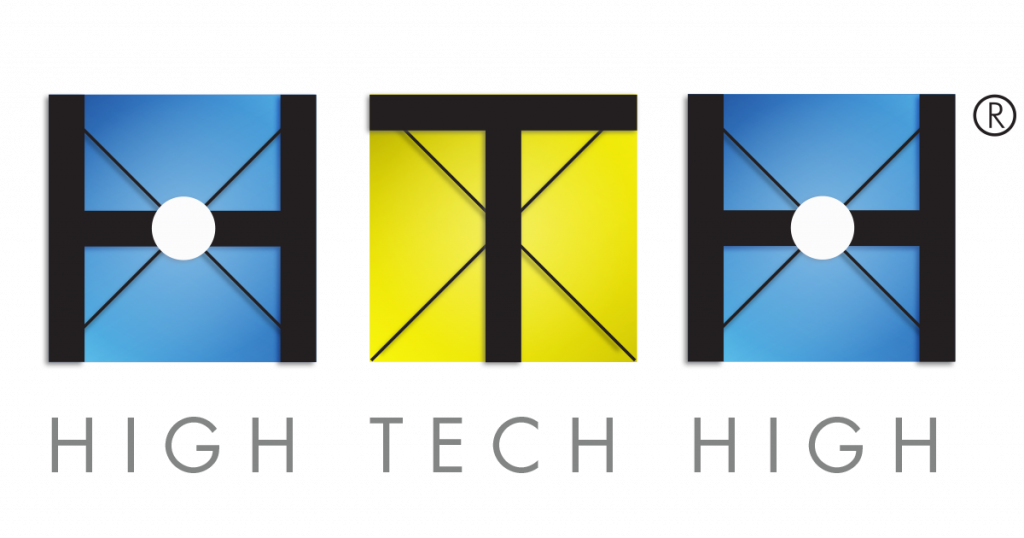
At High Tech High’s six schools in San Diego, California, high-quality student work is on display everywhere. Field studies, community service, academic internships, and consultation with outside experts connect students’ learning to the world beyond school. Students are encouraged to take risks with their learning and to use their mistakes as opportunities to develop resilience and persistence. High Tech’s elementary, middle, and high schools share a common intellectual mission and commitment to deeper learning. The rigorous curriculum meets the admission requirements of the University of California, and 98% of graduates go to college, most of them enrolling in four-year institutions.
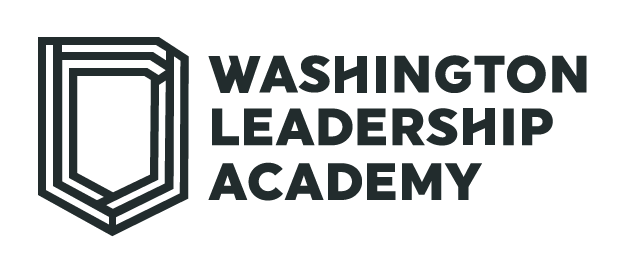
In Washington, D.C., the Washington Leadership Academy offers four years of computer science to every student, along with opportunities to learn through virtual reality. WLA places a strong emphasis on leadership to prepare graduates to take an active role in digital-age civic life. Students can take electives from part-time instructors with specific, hard-to-find skills in fields such as programming and robotics. And teachers leverage digital tools to personalize learning, tailoring instruction to each student’s interests and needs while tracking each student’s mastery of rigorous standards.

Bard Early Colleges is a frontrunner in providing high school students access to college level courses, particularly low-income students and students of color. Bard encourages students to value learning, question assumptions, engage in reasoned debate, and strengthen their own voices. Graduates earn both their high school diplomas and associate degrees, with up to two years of transferable college credit. A strong focus on analytical reading and writing and an approach to instruction based on the Socratic seminar inspire students to become leaders across disciplines. With schools located in New York City, Baltimore, Cleveland, and Newark, Bard Early Colleges are increasing college access, affordability, and completion.
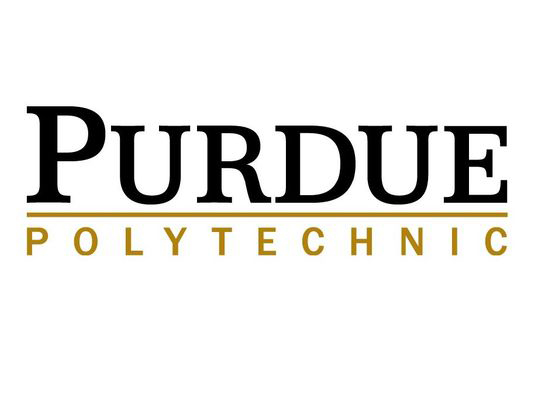
In Indianapolis, Indiana, students at Purdue Polytechnic High School—part of the city’s Innovation Schools Network—are getting prepared for the high-skill, high-wage STEM jobs of the future. At PPHS, students learn by doing, including through industry-focused projects and design challenges that combine rigorous academics and applied skills. Personal learning coaches help students create a customized daily schedule that meets their unique educational needs. And every graduate has a pathway to postsecondary education and training, including an option for direct admission to Purdue Polytechnic Institute.
Decide on an approach and initial scale.
Regardless of the size of your district, you will want to think hard about the scale of your redesign effort. Do you want to get activity underway in all of your high schools simultaneously? Would you prefer to start small, with only one or two? And what about the approach? Do you want to open up a design competition, allowing teams from every school to compete, or something narrower? This is something you will want to talk through carefully with the superintendent, especially given that design teams will need considerable support.
Think hard about how to structure the needed support.
The XQ website includes lots of resources on high school design and redesign. We invite you to use it as a toolbox of videos, infographics, podcasts, and Knowledge Modules. We made them for you!
XQ RESOURCES
Explore These and More
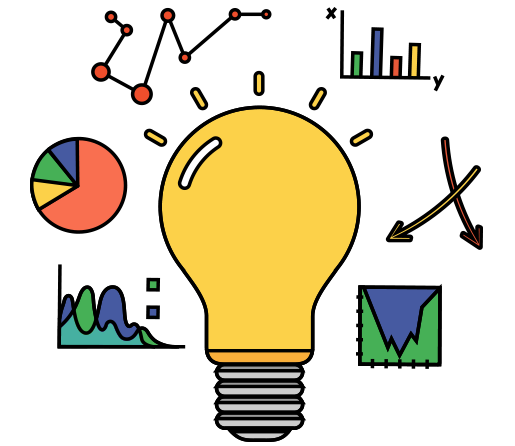
Knowledge Modules
Imagining high school takes a lot of hard work. And deep knowledge. These refreshed modules offer a mix of cutting-edge academic research and inspiration to help anyone think boldly about both the possibilities and the realities of rethinking high school.
Facts and Interactives
XQ has created three fact-filled infographics that may be useful in your campaign: Who Succeeds and Why?, College & Career Readiness for All?, and Preparing Students for the Workplaces of the Future.
Expert Podcasts
Listen to conversations with transformational leaders in education. You’ll hear inspiring examples, stories, and lessons learned from across the country.
Design Kit
Our XQ Design Kit is packed with everything you need to launch your community on the journey of high school design. To order yours, write to us at [email protected]
High School & the Future of Work: A Guide for State Policymakers
Learn how effective state policy leadership can set the stage for local high school redesign and improvement.
https://xqsuperschool.org / future
Get a community redesign process underway.
You can structure your process in a variety of ways. You might, for example, get a variety of ideas percolating—and a variety of new players engaged—with a community-wide visioning process. The ideas hatched—and relationships made—there can excite interest in the community and serve as fodder for a more sophisticated design process later on. Or you can get right to work with a design process or design competition. Think about how to organize and support the process. Through the high school office of your district? A respected nonprofit or community foundation? A local college? A new organization? The right support will make all the difference in your ultimate success.
Teaching For Deeper Learning
Establish design principles or a design framework to help give the process structure.
Every effective high school is built on a set of design principles that define how it will operate day to day, how members of the school community will work together, and how everyone in the school will pursue common goals and priorities.
Design principles are aspirational, but they’re also practical. For example, a school that sees personalized learning as fundamental will also see that the principle is meaningless without high-quality teaching and learning, informative assessments, and the right technology tools in place. Similarly, a carefully structured academic program will succeed only if students are able to cultivate strong, trusting relationships with adults and their fellow students. Those practical pieces may need to be developed carefully and implemented over time, but articulating the principle helps make personalized learning an ongoing priority.
The following “design principles” were developed by XQ with help from leading educators, experts, and activists. They’re here for your school community to borrow, in whole or in part, as you see fit.
XQ DESIGN PRINCIPLES
Consider, Discuss, and Make Them Your Own
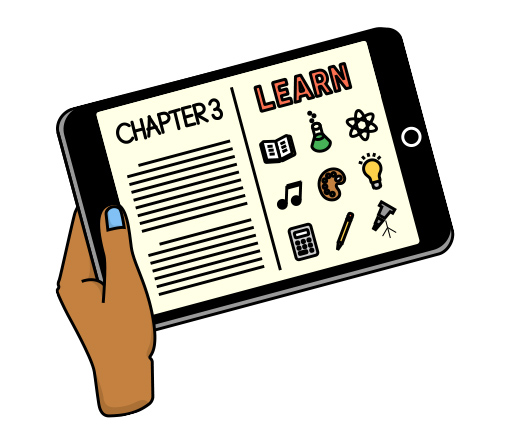
Innovative approaches to curriculum and teaching that use real-world, interdisciplinary learning experiences to enable students to develop and apply deep content knowledge and complex skills.
Personalized Learning Powered by Tech
Leveraging technology to tailor learning to the unique needs of each student, as well as to actively assess student progress and provide tools that help students build the skills and knowledge they need to thrive in college, career, and life.

Youth Empowerment, Voice and Choice
An approach to teaching, learning, and overall school culture that focuses on truly getting to know students, both inside and outside the classroom, and giving all students opportunities to build their identities as learners and develop the capacity for agency and autonomy.
Community Partnerships
Powerful partnerships—with the community and cultural institutions, business and industry, higher education, nonprofit organizations, and health and service providers—that provide support, real-world experiences, and networking opportunities for students, enabling them to envision and set goals for the future.

A Broad Vision of Student Success
Goals and outcomes that integrate academic and social-emotional learning and enable students to become masters of all fundamental literacies, holders of foundational knowledge, original thinkers for an uncertain world, generous collaborators for tough problems, and learners for life.
Rethinking Traditional Systems
Non-traditional, flexible uses of time, technology, space, place, financial resources, and roles to increase the effectiveness of teaching and learning.
Workbook 4.
START RETHINKING HIGH SCHOOLS IN YOUR COMMUNITY
High school redesign is meant to be a time of exploration, innovation, and creativity. How do you take your community’s natural resources, talents, and interests and leverage them into educational excellence for all students? This workbook is meant to help your schools and their communities come together to imagine what could be.
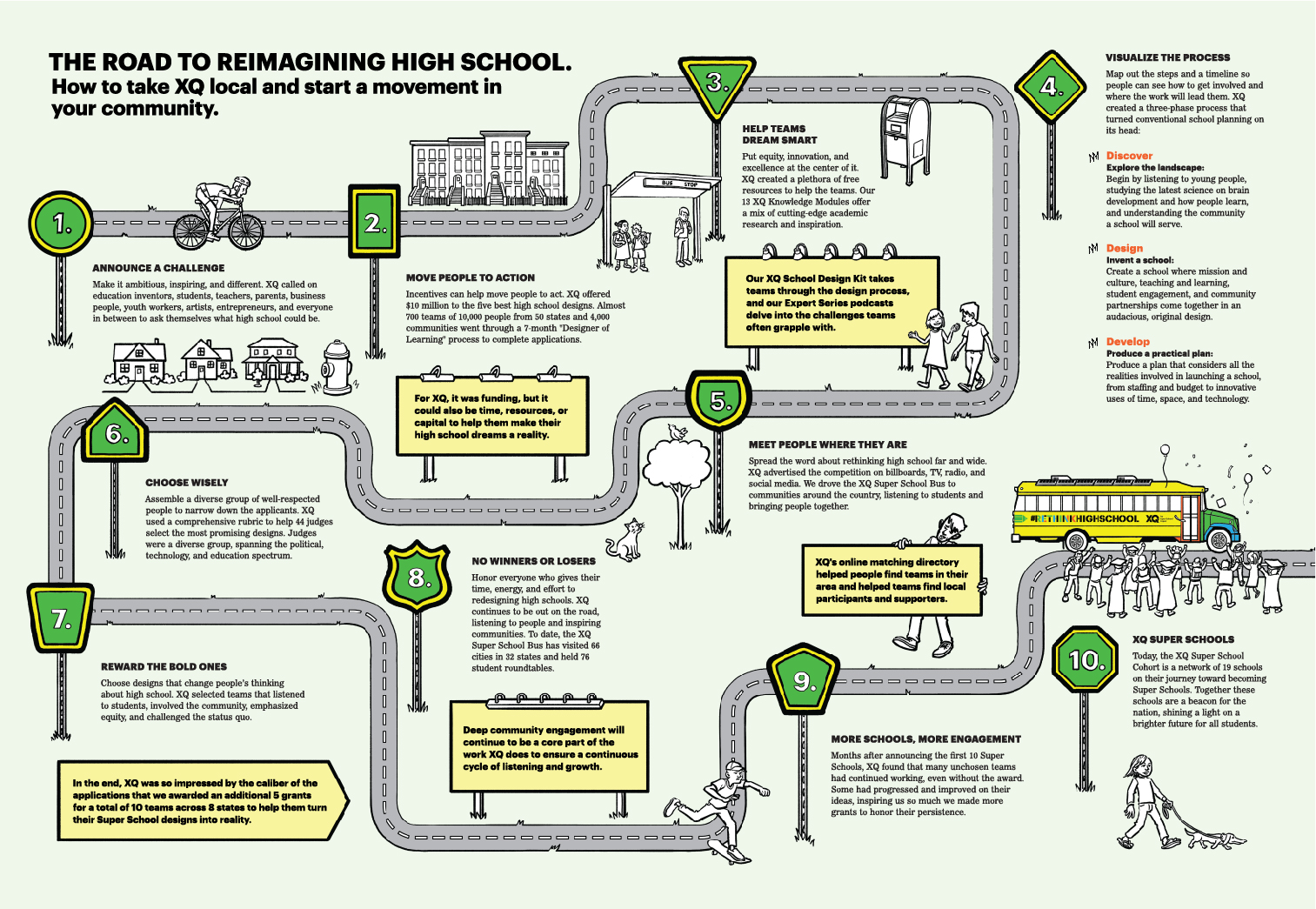
GETTING AND KEEPING THE COMMUNITY INVOLVED
Whether you’re building a base of supporters for high school redesign or keeping them involved over the coming years, ongoing dialogue is important. Here are some things your school board and the superintendent can do to engage key constituencies in your community.
1.
Conduct regular surveys of high school students and families.
Your local high schools might already be conducting student and parent surveys; if not, initiate them. The findings can be a jumping off point for high school redesign.
2.
Establish a community partnership among local businesses.
When local business leaders get involved in improving high schools, great things can happen for both students and teachers. A business coalition can coordinate internships and mentoring for students, create paid work experiences, and connect teachers with opportunities to co-design community service and workplace-learning projects.
3.
Join forces with local colleges and universities.
Form a local council to ask questions about how well local institutions are preparing your students. What does it take to succeed in and through college? What are the skills employers are looking for from those with an associate or bachelor’s degree? What do university students tell you are the most useful lessons they learned in high school that they lean on the most while continuing their educations? These aren’t just interesting questions. They reveal informative insights about what’s most valuable for preparing students for success in college, careers, and life—the kind of insights that can spur real rethinking.
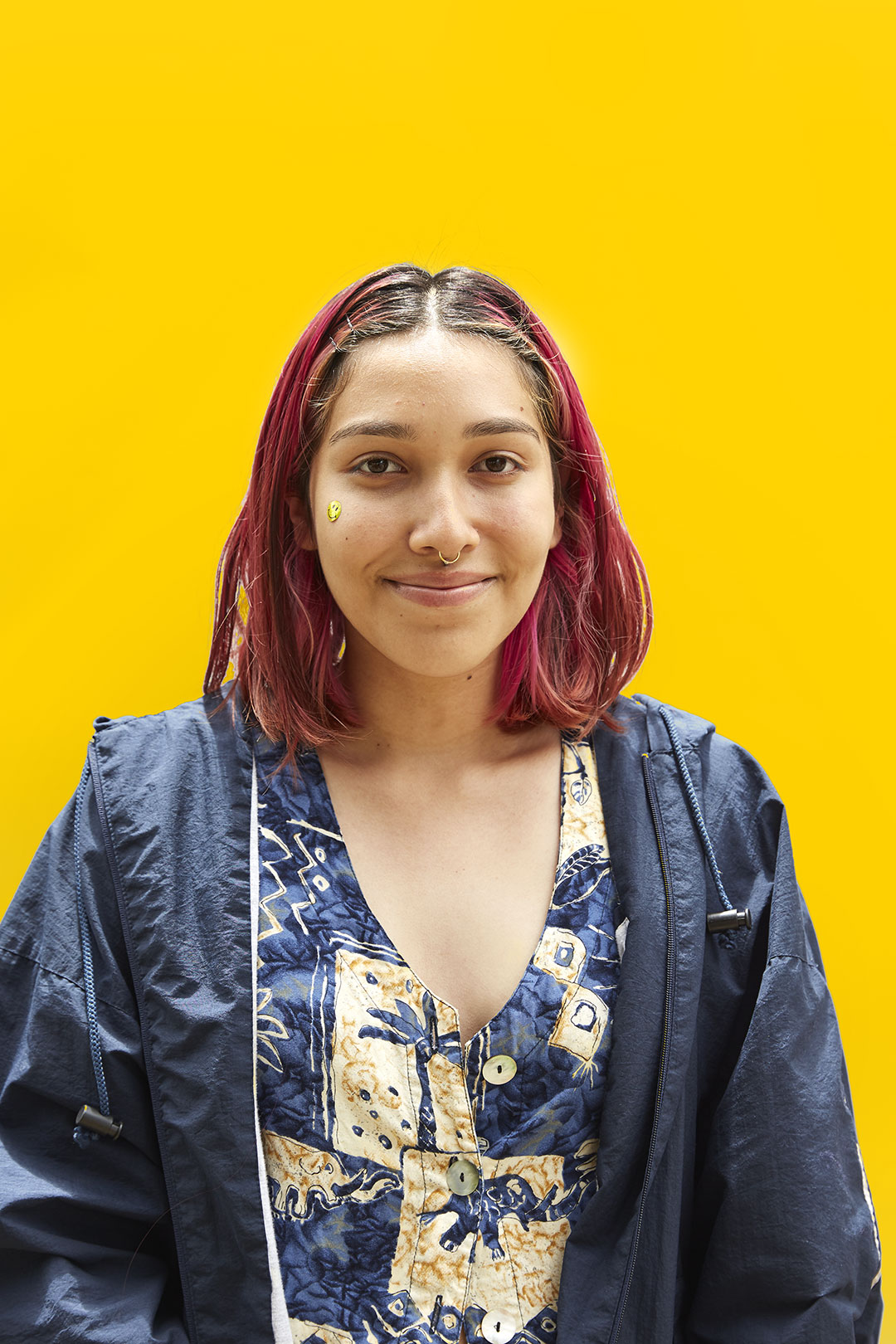
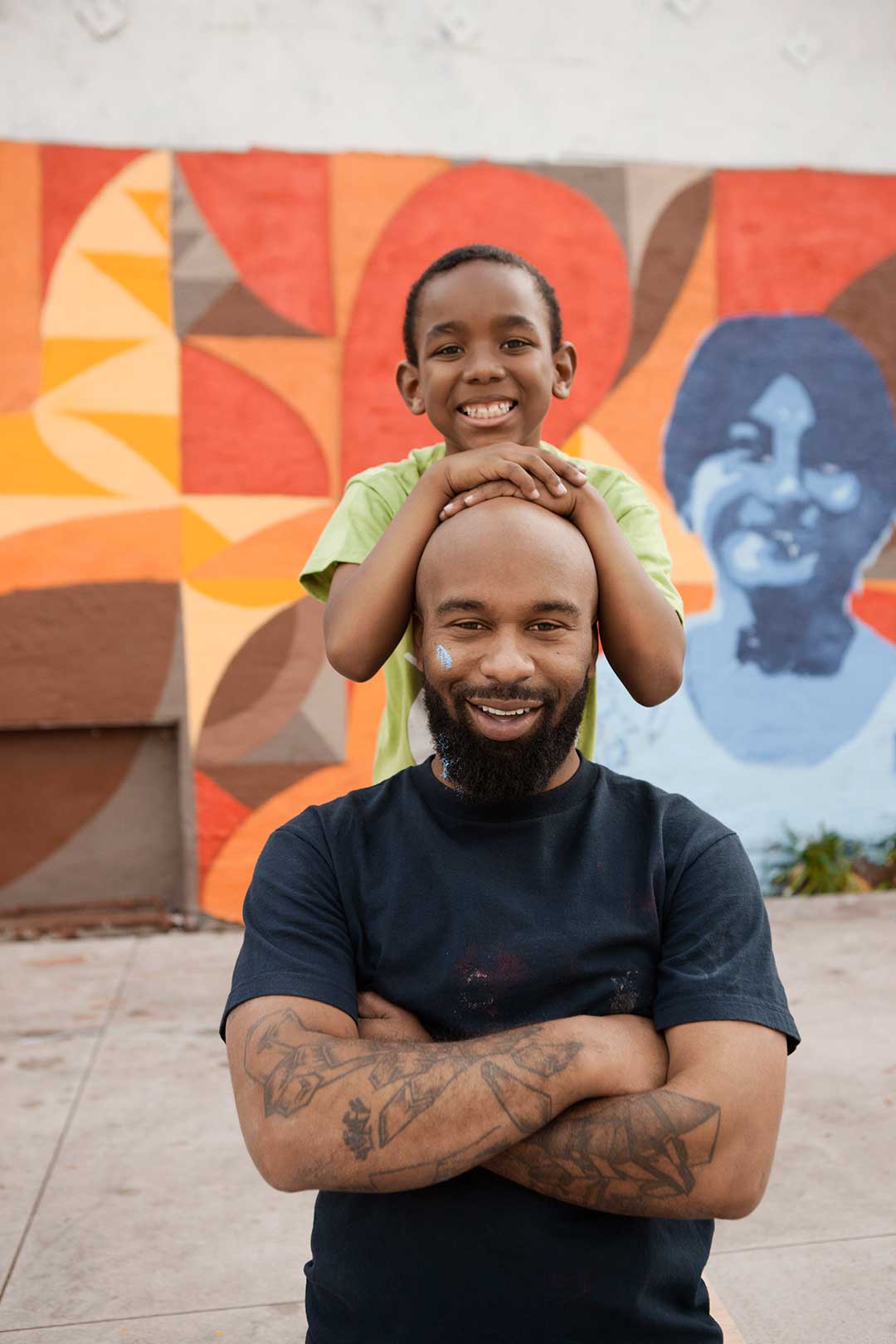
30 Students x 1 Teacher x 1 Subject, Repeat for 6 Periods.
No More.
Unchanged for nearly 100 years, the rigid rules that govern high school education in America are stifling the innovations of our best educators, keeping community institutions and local businesses that could provide powerful learning opportunities at bay, and leaving our young people underprepared for the world that awaits them after high school.
Over the past two decades, our elementary and middle schools have gotten a lot better. But outmoded systems have kept high schools stuck in too many communities. We’ve gone from the Model T to the Tesla, from the typewriter to the touchscreen, from the rotary phone to the smartphone, but very little has changed in our high schools.
That changes, with you.
You already have everything it takes—the commitment, the intentionality, the sense of possibility—to jumpstart the high school redesign process in your own community. Imagining high school takes hard work, deep knowledge, and an unwavering sense of optimism in the future. All of which you’ve got, in spades. As you collaborate with others to rethink what’s possible in your community, we invite you to use XQ materials to help you on your design journey. To think through issues. To answer questions. To pre-empt pitfalls and concerns.
All XQ materials are designed to make participation accessible to anyone who’s motivated to get involved. Educators, of course—from your fellow school board members to teachers, principals, youth workers, college professors, community leaders, and partners who work with young people every day. They’re also designed to help you engage high school students and their families, not to mention recent grads, parents of young children, business leaders, professionals, and others in your community. All those people have valuable perspectives, ideas, and resources to bring to the table. It’s up to you to gather them and inspire them.

ON
YOUR MARK,
GET SET,
CHANGE!
Serve For Change
Sign up for our newsletter
Get the latest educator insights and practical classroom tips every other week, direct from the XQ community
Follow us to #RethinkHighSchool